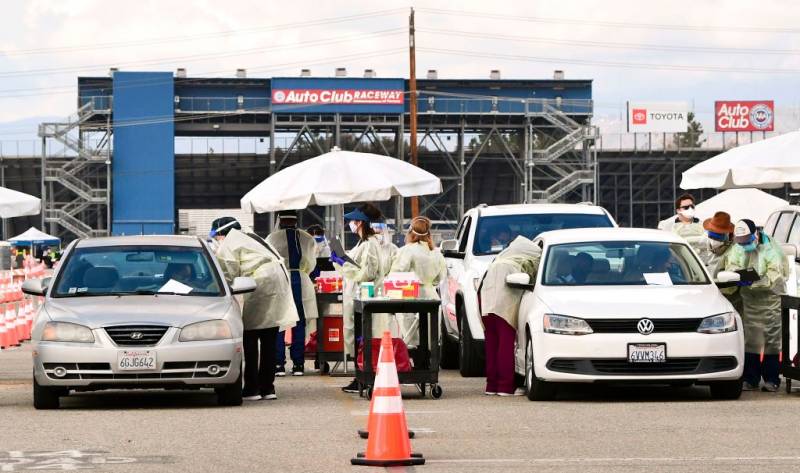Following Monday's announcement, officials in many California counties — including Marin, Contra Costa, Alameda and Santa Clara — announced they would allow outdoor restaurant dining and other services to reopen. San Francisco will wait until Thursday to do so, Mayor London Breed said on Monday. “We will be moving forward with some limited re-openings, including outdoor dining and personal services,” she wrote in a tweet.
Orange County planned to lift some restrictions as well, said Jessica Good, a spokesperson for the county health agency.
In Los Angeles County, home to 10 million people, county Public Health Director Barbara Ferrer said outdoor dining will reopen Friday with capacity limits for restaurants.
The state's decision comes amid improving trends in California's rate of infections, hospitalizations and intensive care unit capacity, as well as vaccinations.
"Today, we can lay claim to starting to see some real light at the end of the tunnel as it relates to case numbers," Newsom said, pointing to a notable decline in average statewide case rates over the last two weeks and a nearly 20% decrease in hospitalizations.
"Each region's a little bit different, but we are in a position projecting four weeks forward with a significant decline in the case rates, positivity rates," he said. "We are anticipating still more declines in hospitalizations and more declines in ICU use. And that's why we're lifting that stay-at-home order effective immediately today."
But he warned that despite the encouraging data, the virus was still raging, and California was by no means "out of the woods." As of Monday, the state topped 3.1 million confirmed COVID-19 cases and 37,118 deaths, according to its public health website.
Newsom imposed the stay-at-home order in December, as new coronavirus cases exploded. Under the system, a multi-county region had to shut down most businesses and order people to stay home if ICU capacity dropped below 15%. An 11-county Northern California region was never under the order. The Greater Sacramento region exited the order earlier this month.
The state makes its determinations based on four-week projections of ICU capacity, although officials have not fully disclosed the methodology behind the forecasts, spurring confusion among many local and state leaders. Newsom said those projections are based on four variables, including each region's case rates, rates of transmission, ICU capacity and the percentage of cases that end up in the ICU.
California's overall projected ICU capacity for Feb. 21 is just over 30%, he said, with regional projected ICU capacities ranging from 18.9% in the Greater Sacramento region to 33.3% in Southern California.

